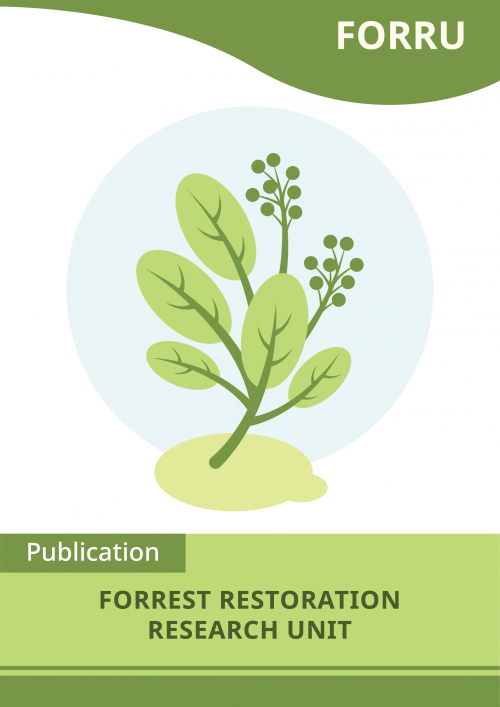Activities of the forest restoration research unit, northern Thailand

Elliott S., V. Anusarnsunthorn, S. Kopachon, D. Blakesley & N. C. Garwood, 1996. Activities of the forest restoration research unit, northern Thailand. P 8 in World Heritage Tropical Forests Conference, Science for Better Understanding and Management, Handbook and Abstracts.
ABSTRACT - This presentation summarizes the work of the Forest Restoration Research Unit (FORRU) based in Doi Suthep-Pui National Park, northern Thailand (Elliott et al. 1995). Although Doi Suthep-Pui is not a World Heritage Site, much of the research carried out at FORRU is applicable to restoring the monsoonal forests found throughout the region in World Heritage Sites, both established (Thung Yai-Huai Khakhaeng Wildlife Sanctuary) and proposed (Phu Kradueng, Phu Luang and Kaeng Krachan). FORRU, a joint initiative between Chiang Mai University (CMU) and the Royal Forest Department, with sponsorship from Riche Monde (Bangkok) Ltd., was established to determine the most effective methods to complement and accelerate natural forest regeneration on deforested sites within protected areas to increase biodiversity and conserve watersheds.
FORRU's researchers are monitoring the phenology of more than 90 forest tree species to determine the seasonal availability of seed and the factors influencing flowering and fruiting. A computer database of seed and fruit morphology and dispersal mechanisms is being compiled. Seed germination trials on several hundred native forest tree species are being carried out, to determine their germination requirements and identify which are suitable for planting in deforested sites.
Seedlings are described and drawn at all stages of development to compile a seedling identification handbook to aid reforestation projects. A reference collection of seedling specimens is also being established at the CMU herbarium and species accounts are being published (Kopachon et al. 1996). In co-operation with Hmong hill tribe villagers, planting trials are carried out in deforested sites within Doi Suthep-Pui National Park using various methods, under various conditions of micro-climate, topography, ground flora etc. and the survival and growth rate of seedlings of many species are monitored.
FORRU is developing a system to accelerate natural forest regeneration, by identifying those primary forest seedling species which can be transplanted into deforested sites at an earlier stage in the succession process than would occur naturally. Such species are often limited by extirpation of seed dispersing animals such as primates and hornbills. Such a system would increase both the density and biodiversity of regenerating forest and thus accelerate the return of much of the wildlife which has disappeared from many of northern Thailand's national parks and wildlife sanctuaries over the past 20 years.
Acknowledgments
The first author's participation in the World Heritage Tropical Forests Conference was made possible by an International Tropical Timber Organization Fellowship. FORRU is generously sponsored by Riche Monde (Bangkok) Ltd. as part of the company's ongoing program of support for environmental science and education.
References
Kopachon, S., Suriya, K., Hardwick, K., Pakaad, G., Maxwell, J.F., Anusarnsunthorn, V., Blakesley, D., Garwood, N.C. and Elliott, S. (1996) Forest restoration research in northern Thailand: 1. The fruits, seeds and seedlings of Hovenia dulcis Thunb. (Rhamnaceae). Nat. Hist. Bull. Siam Soc. 44(1) (in press).

